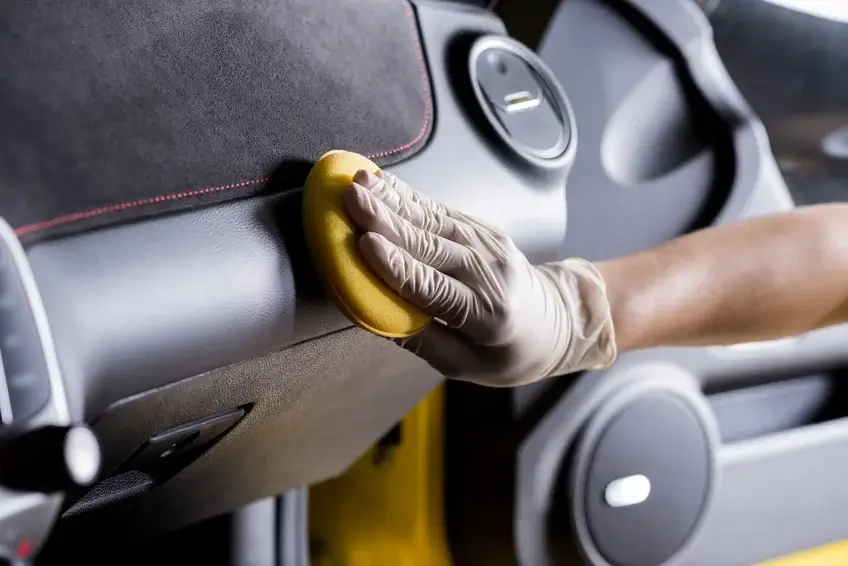Hello people, today we’re going to discuss a prolific guide on how to remove scratches from plastic. So without further ado, let’s get to the point.
How to Fix Scratched Plastic
We don’t like it, but scratches on plastic items are inevitable, whether in your car, countertop, headlights, windows, or other things.
Even normal wear and tear can be a reason for your plastic item to develop a shallow whitish mark over time when exposed to sunlight or extreme temperatures.
Over time, these hidden spots become scratches that can be pretty uncomfortable, making your plastic possessions quite worn out.
However, some easy methods will help you remove scratch from plastic sheeting quickly. Everything you need to follow the process can be easily found in your house.
Remember, it’s best to remove scratches when small; removing them will become more complicated once they attain a specific size.
I advise regular cleaning; it will also help prevent the cloudy white film on the plastic from becoming permanent.
This applies to toys, accessories, and outdoor furniture. They should be cleaned at least once a month and stored with proper coverings when not in use.
Before beginning, analyzing the extent of the scratch is a significant step.
It would be best if you started with the least abrasive cleaning agents that don’t create additional damage resulting in sobering the finish.
The endgame is to break even the plastic just enough to make a smooth finish.
Things You’ll Need
- Plastic polishing compound
- Cotton Balls
- Baking Soda
- Distilled white vinegar
- non-gel toothpaste
- Dishwashing liquid
- Cotton Rags
- Baking Soda
- Medium Bowl
Before moving forward with the method, you should examine the scratch(es) closely and thoroughly.
Use your fingernail or credit card to determine the deepness, and if your fingernail or credit doesn’t hook, it’s shallow enough to be repaired with light abrasives like toothpaste or baking soda.
But if the nail does the hook, you have a deeper scratch, requiring more effort using super-fine grit wet sandpaper.
Interesting Read – How to Repair PVC Pipe Without Cutting | The Complete Guide
How to Get Scratches Off Plastic – The Process
Step 1 – Cleaning the Plastic Thoroughly
Before the wiping starts, it is essential to remove excess debris and surface soil from the surface of the plastic, which can further create more scratches making the situation worse.
Utilize warm water and a few drops of a dishwashing liquid and rub it gently with a cotton round or a microfiber cloth.
If you notice a cloudy appearance on the plastic surface, add one-half cup of distilled white vinegar per gallon of the warm, soapy water solution to return the original finished look.
Step 2 – Wipe Using Toothpaste or Baking Soda
The everyday toothpaste contains silica, a fantastic solution for minor scratches.
Use non-gel toothpaste and squeeze out enough to cover the scratched part. Keep buffing in small circles with a clean, dry cloth or a cotton round.
Keep doing that till the surface evens out, and once it’s done, wash the residue with warm water and scrutinize your work.
You may have to repeat the process several times to see satisfactory results.
If, for some reason, you don’t want to work with toothpaste, mix water and baking soda in equal quantities to make a thick paste and gently apply it with a cotton ball or cloth in a circular motion.
Rinse intermittently and keep repeating until the scratch is completely removed.
Toothpaste or baking soda are great at eradicating scratches from your beloved plastic products.
It works fine with most searches; however, if you’re dealing with deeper scratches, move on to wet micro grit sandpaper.
Step 3 – Wet Sandpaper at Work
Using wet micro grit sandpaper will increase your chances of getting rid of deeper scratches as it steadily levels out the surface of the plastic with a bit more force than baking soda or toothpaste.
However, never use regular grit sandpaper as it is too raspy for your plastic.
Soak a 360 micro grit paper in warm water until the paper is saturated. Gently rub the area in a circular motion.
Make sure not to apply too much pressure or create new scratches. Rinse periodically. Re-wet the sandpaper if needed.
Step 4 – Time For a Finer Grit Sandpaper
If you notice the remains of the scratch, it’s time to move to higher grit sandpaper. Clean the area and use 500 grit sandpaper in a circular motion to buff after each pass.
Keep the grit until the scratch is completely eradicated when the scratch has been smoothed out, clean the surface with a cotton ball or cloth.
Step 5 – Shine it With Polishing Compound
After moving the deeper scratches, a part often looks dull from the rest of the piece. You must utilize a plastic or metal shining compound to regain the shine.
Follow the instructions on the label or use a clean, dry cotton cloth, wiping the dull part in a circular motion—Buff the part with a lint-free microfiber cloth.
Keep doing the same till the shine is regained.
Engaging Read – How To Get Sticky Residue Off Plastic? The Complete Guide
How to Remove Searches From a Car Exterior and Interior 
Image Credit - holtsauto.com
The car interior and exterior are all plastic these days, so I’ll also talk about removing scratches from various parts of your car.
You can take two approaches to cleaning your car’s interior panels. Either buy a specialist kit with everything you need for the job, or you have to make your hands a bit dirty and use sanding, painting, and heating.
Some kits are pretty effective when dealing with light abrasions and scratches, but fixing it yourself is the best option for deeper scratches.
Besides super fine-grit sandpaper, you’ll need a heat gun, an interior grain pad, and an interior car cleaner.
Steps To Follow
So the basics are the same as mentioned above, similar to any plastic surface cleaning.
- First, clean the area around the scratch with an interior plastic cleaner. As mentioned above, removing dirt makes the surface squeaky and clean and will help you get a smooth finish and stop dust and dirt from melting into plastic, which can severely affect the color.
- Utilize a half-power heat gun to apply heat on the plastic until it softens. Ensure you don’t overheat the plastic or burn the part leaving you with irreversible damage. After a time, the plastic will become shiny, losing its texture, which means it is ready for molding.
- Gently apply a grain pad to the affected area. The scratch will become smooth and create a good texture, helping it blend in with the plastic. Grainpads are readily available online and come in many types. However, please choose the one that resembles most the plastic trim of your car and apply it to the part using a hard plastic application pad available in the set.
- Wait for about 15 minutes to let the area harden and cool. The texture will now look identical to the unaffected area, and your job is done here, but if you’re looking for a perfect finish, you’ll have to sand it down utilizing a superfine grain paper.
- At last, clean and dry the area using a wet cotton cloth, and you’re done.
FAQs
Here are some commonly asked questions about how to get scratches out of plastic. Let’s delve further into the topic to gain a better understanding.
Does WD 40 remove scratches from plastic?
WD 40 is a water-displacing oil whose primary application is lubricating tools and removing excess water from metal surfaces; however, it doesn’t remove scratches from plastic surfaces.
How to get scratches out of PVC?
Take a few drops of brass cleaner on a soft cotton cloth and wipe the PVC surface gently in a circular motion. The cleaning compounds help fill the small cracks, and the rubbings buff up the surface.
Can you buff out scratches on plexiglass?
You have to utilize 600 grit sandpaper and wipe it onto the searched surface in a circular motion. Repeat till you notice a buffed-up surface. It might take a few tries to see satisfactory results. Once you’re done, take a clean, wet, and soft cotton cloth the clean the surface properly.
Can you remove scratches from polycarbonate glasses?
Removing scratches from polycarbonate is as easy as doing it on any plastic surface. You only have to squeeze out pea-sized toothpaste on a clean, soft cotton cloth. Rub the cloth on the searched portion for 20-25 seconds and immediately clean the toothpaste using another wet cotton cloth.
What kind of toothpaste removes scratches?
It is recommended to use non-gel ‘whitening’ toothpaste for removing scratches from plastic surfaces as it contains maximum silica and the least abrasives compared to other kinds of toothpaste.
Suggested Read
- How to Cut PVC Pipe | A Complete Tutorial
- How to Glue PVC Pipe | The Definitive Guide
- 11 Fantastic Ways to Remove Stains From Plastic
- What is the Best Glue for Plastic Parts | The Ultimate Guide
- What is Liquid Plastic? | Liquid Plastic Vs. Resin | An In-Depth Guide
The Conclusion
In conclusion, effectively removing scratches from plastic surfaces is achievable with the proper knowledge and techniques. By understanding the various methods available, from using household items to specialized products, anyone can restore the appearance of their plastic items.
This enhances the aesthetic appeal and prolongs the life and functionality of these items, making scratch removal a valuable skill to master.
Thanks for reading. Have a wonderful day.
Quick Navigation



